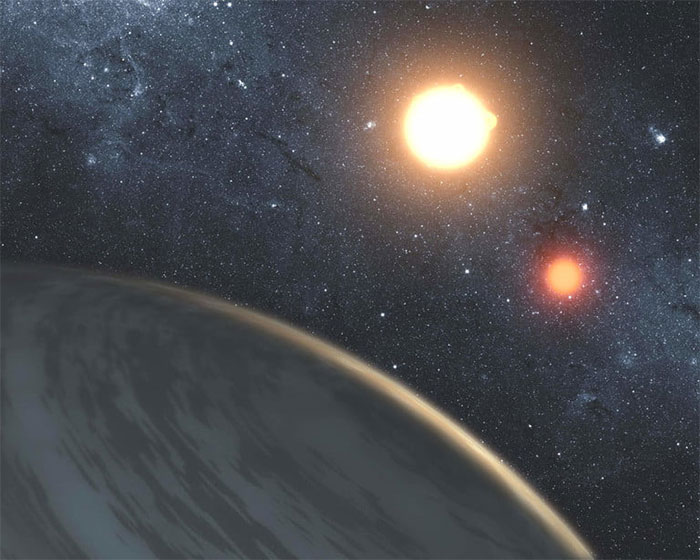Young alien planet promises to decode the formation of planets
Astronomers in the US have discovered an alien planet orbiting one of the brightest young stars.
The study, published in The Astrophysical Journal Letters, says the "master" star and the planet DS Tuc Ab revolve around about 45 million years - still a "teenage" period of time. the planets. This star and planet are discovered by the Space Extracurricular Survey Satellite (TESS) of the US Aeronautics and Space Agency (NASA) while on duty.

This planet is about 150 light-years away from Earth.
Researchers at Dartmouth University said the planet outside the Solar System is no longer growing, but because of its young age, the planet is still experiencing rapid changes such as atmospheric loss due to its radiation emitted from its host star. Planets often become larger when they first form and become smaller over time, as they cool and lose the atmosphere. However, planets can take millions or billions of years to reach "maturity" , this process cannot be observed in real time. Therefore, researchers are searching for planets around young stars to learn how the planets grow.
The alien planet, about 150 light-years away from Earth, has two Suns and creates a full orbit around its main star in just eight days. This planet is about six times the size of the Earth, which is equivalent to the size of Neptune (Neptune) and Saturn (Saturn). At that size, it can have the same composition as the giant planets in our Solar System.
Scientist Elisabeth Newton, who led the study, said: "The brightness of a star allows us to study the planet in detail because the more photons you have, the better statistics you have. A discovery of this type of planet with such a unique age and unusual size will not be possible without TESS ".
Newton's team is now hoping to detect atmospheric evaporation in the planet's movements. Understanding this process can help researchers predict what could happen to exoplanets for billions of years, and also understand why atmospheric losses can affect onions. The oldest crystal, including the Earth.
TESS satellite was launched into orbit on April 18, 2018. The satellite will survey about 200,000 brightest stars near the Sun to search for extrasolar planets, including stars that can support life.
- The first clear picture of planet formation
- Planet's 'carnivorous' star is 450 light years from Earth
- The planet is 2,500 times larger than Earth
- The process of forming giant planets in the universe
- Discover the exciting new planet discovered
- The formation of planets in gas disks
- Discover a new planet 13 times larger than Jupiter
- Discover 9 new planets
- Detecting the youngest alien planet
- Storms are the origin of planet formation
- Earth-like planets may contain life
- Discovered three newly formed planets in our galaxy
 Van Allen's belt and evidence that the Apollo 11 mission to the Moon was myth
Van Allen's belt and evidence that the Apollo 11 mission to the Moon was myth The levels of civilization in the universe (Kardashev scale)
The levels of civilization in the universe (Kardashev scale) Today Mars, the sun and the Earth are aligned
Today Mars, the sun and the Earth are aligned The Amazon owner announced a secret plan to build a space base for thousands of people
The Amazon owner announced a secret plan to build a space base for thousands of people